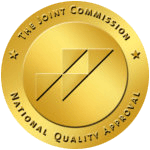Different Types of Addictive Behaviors

When speaking about addiction, drugs and alcohol usually accompanies the discussion. But, are drugs and alcohol the only substances that can be addicting? Are there other substances not categorized as drugs and alcohol that can be addicting? Also, can certain behaviors be addicting as well?
Here is a top list of the most common addictions compiled from psychologists and addiction experts that reveals some answers to these questions, some of which may surprise you.
Most Common Addictions:
- Alcohol
- Tobacco/Nicotine
- Drugs (over-the-counter, prescription, illegal)
- Gambling
- Coffee
- Food
- Video games
- Internet/Social Media
- Sex/Pornography
- Shopping
- Work
Alcohol, tobacco, and drugs
The prevalence of alcohol, tobacco, and drug addiction has prompted numerous scientific and psychological studies and literature for its recognition, diagnosis and treatment; therefore, this article will only explore the lesser known addictions for the purpose of promoting education and awareness.
Types of addictions: Substance vs. Behavioral
Substance addiction, as the term implies, refers to the abusive use of any substance (e.g. illegal drugs, over-the-counter drugs, prescription medicines, food, coffee, and even sugar) despite harmful effects and negative consequences that may arise.
Behavioral addiction, or process addiction, is defined as self-destructive, compulsive, recurring behavior (e.g. gambling, using the internet, falling in love/being in love, having sex, playing video/internet games, working, shopping, and working out) to an extent which causes adverse consequences to the individual’s personal and social life as well as mental and physical health.

Experts believe that all entities which are stimulating to the mind and body can be addictive and that addiction can occur in many forms. It is when habit changes into obligation is when it is categorized as addiction. Classically, addiction is defined as a physical dependence in conjunction with withdrawal symptoms. However, similar to certain substance addictions, some compulsive behaviors can occur that lead to negative ramifications, which may not have dramatic physical withdrawal symptoms but rather a psychological dependency.
Thus, substance and behavioral addictions arise when individuals fall victim to maladaptive and repetitive patterns of use of substances or behaviors in order to satisfy a self-imposed craving and self-reward syndrome resulting in a physiological stimulation or “high”, but ultimately leading to negative outcomes to the self and/or others. Since research over the last two decades suggest that a wide range of substances and behavioral addictions could serve similar functions, it would be useful to think of addictions in terms of problems of lifestyle as well as of the individual.
Unfortunately, common among those who struggle with addiction, people that suffer from behavioral addictions are unable to stop engaging in their compulsive destructive behaviors, due to a lack of awareness and education, without treatment and intervention.
Passion vs. Addiction: How can you tell the difference?
Most daily behaviors and activities that we engage in represents our passions, motivations, and aspirations for improvement and growth. Our passion is a measure of our delight and enthusiasm for a highly desirable goal that we pursue out of excitement and pleasure for self-fulfillment and satisfaction.
Balance and moderation is key when it comes to passionate behaviors. It is when an individual loses control, joy, a sense of fulfillment, and satisfaction, but continues to compulsively engage in these behaviors despite feelings of guilt and negative consequences to mental, social, and financial life that it is categorized as addictive behaviors.
According to the Diagnostic and Statistical Manual of Mental Disorders, Fifth Edition (DSM-5), diagnosis of a substance use disorder is based on evidence of impaired control, social impairment, risky use, and pharmacological criteria (tolerance, dependence, and withdrawal symptoms). The same diagnosis criteria can be applied to behavioral disorders as well.
Signs of a Behavioral Addiction
- The person struggles with mental health or physical health issues as a result of the behavior and/or is unable to stop.
- The person has difficulties in significant relationships at home and, in some cases, at work due to the disruptive behavior.
- The person experiences other negative consequences that are directly caused by continued, extreme, or chronic engagement in the behavior.
- The person cannot stop engaging in these behaviors despite negative consequences.
The following explores some of the most common behavioral addictions and distinguishes what categorizes each behavior as an addiction:
Gambling
The top 7 most common forms of gambling are:
- National lottery and scratch cards
- Football pools
- Other lotteries and raffles
- Fruit machines in pubs
- Bingo
- Horse racing
- Casino gambling
The fifth edition of the Diagnostic and Statistical Manual of Mental Disorders (DSM-5) has included gambling disorder under the newly created category of behavioral addictions. Research has discovered that gambling disorder is similar to substance-related disorders in multiple ways. These similarities will help people become more aware and educated in hopes of getting much needed treatment and rehabilitation.

Gambling addiction, also known as problem gambling, compulsive gambling, or gambling disorder, is an addictive behavior revolving around various types of gambling that endangers a person’s life, career, and/or family. People with a gambling disorder often hide their behavior. They may lie to family members, hiding their winnings or losses. They seek excitement, a euphoric thrill, or a physical or mental escape and numbing that comes from gambling. Specifically, gambling addiction is characterized by the following behaviors:
- Placing bets more and more frequently
- Betting more than originally intended
- “Chasing” losses by continually betting beyond the ability to pay
- Feeling irritable or aggressive when unable to gamble or when losing
- Being preoccupied with gambling
Problem gamblers may face legal, financial (debt, foreclosure, bankruptcy), interpersonal, and academic/career problems. Additionally, many who struggle with gambling addiction may consider or attempt suicide.
Coffee/Caffeine
Caffeine intoxication and caffeine withdrawal are included in DSM-5. Caffeine use disorder, however, is in the section of DSM-5 for conditions requiring further research. While there is evidence to support this as a disorder, experts conclude it is not yet clear to what extent it is a clinically significant disorder.
Some caffeine withdrawal symptoms:
- Headache
- Sleepiness
- Irritability
- Lethargy
- Constipation
- Muscle Pain, Stiffness, Cramping
- Lack of Concentration
- Insomnia
- Nausea and Vomiting
- Anxiety
- Dizziness
- Heart Rhythm Abnormalities
Eating/Food
Due to culture and media misrepresenting conflicting messages about unattainable and unrealistic ideas of body shape, many people to engage in dysfunctional eating habits that has led to the rise of eating disorders. These disorders include: anorexia nervosa, bulimia nervosa, compulsive eating, and binge-eating disorder. About 2 percent of adults in the U.S. have binge-eating disorder.
Although similar in many ways, food addiction is different from binge-eating disorder. Both may result in obesity, but people who struggle with food addiction can be of normal weight as well.
Though eating is a necessity, and people are prone to overeating on occasion, out of boredom, or for enjoyment and pleasure, people with food addiction cannot control their eating habits. They crave foods that are high in fat, sugar, and/or salt. They can develop a tolerance for the foods that they eat, requiring more of what they eat even when they are not hungry which can lead to health problems, such as obesity and mental health issues. Loss of control or hypercontrol (anorexia nervosa and bulimia nervosa) of the consumption of foods is a determinate factor for food addictions. Signs of food addictions include:
- Eating certain foods in a larger amount than planned
- Continuing to eat even when not hungry
- Eating to the point of feeling ill
- Worry about not eating certain types of foods or worry about cutting down on certain types of foods
- When certain foods aren’t available, go out of your way to obtain them
- Eating food often instead of working, spending time with the family, or doing recreational activities.
- You avoid professional or social situations where certain foods are available because of fear of overeating.
- You have problems functioning effectively at your job or school because of food and eating.
- Eating food causes problems such as depression, anxiety, self-loathing, or guilt.
- You need to eat more and more food to reduce negative emotions or increase pleasure.
- Eating the same amount of food doesn’t reduce negative emotions or increase pleasure the way it used to.
Gaming
Internet gaming disorder is included in DSM-5 in the section of disorders requiring further research. This reflects the scientific literature showing that persistent and recurrent use of Internet games, and a preoccupation with them, can result in clinically significant impairment or distress.

According to the Center for On-Line Addiction, warning signs for video game addiction include:
- Playing for increasing amounts of time
- Thinking about gaming during other activities
- Gaming to escape from real-life problems, anxiety, or depression
- Lying to friends and family to conceal gaming
- Feeling irritable when trying to cut down on gaming
Compared to substance abuse addiction and other process addictions, video game addiction seems relatively harmless. However, compulsively playing video games can interrupt a person’s ability to connect positively with others and have healthy relationships, maintain responsibilities at work, and make choices that support their physical and mental health (e.g., eating regularly or healthfully, going to the doctor, etc.). Ultimately, those who don’t get treatment may end up completely isolating themselves from the real world, losing their ability to function, be with family, and achieve any goals outside of the video game world.
Internet/Social Media
People addicted to social media and the Internet spend a majority of their time connected online on their computers or phones. They risk relationship problems with their friends, family, and loved ones being unable to connect socially through physical interaction. They could lose their jobs and perform poorly in school consumed by spending time on the Internet. Chronic use of social media might contribute to anxiety in users who describe feelings of discomfort and agitation if they are unable to connect, which may be a sign of a withdrawal symptom. A sign of addiction to social media or the Internet, is the inability to disconnect despite negative effects that arose from its use.
Sex
Sexual addiction is manifested in multiple forms, including compulsive masturbation, sex with prostitutes, anonymous sex with numerous partners, affairs despite being in a committed relationship, and habitual exhibitionism and voyeurism. Experts estimate that 8 percent of men and 3 percent of women are sexually addicted. Sexual addicts may use sex as an escape from reality, relieve anxiety, and/or fulfill compulsions that could be related to a borderline personality disorder. Individuals with borderline personality disorders are more likely to exhibit greater sexual preoccupation, be exposed to sex at an early age, frequently engage in casual promiscuous sex with many sexual partners, and engage in homosexual experiences. Sexual addiction is further characterized by the individual’s proclivity for high-risk sexual behaviors, contracting more sexually transmitted infections, and their chances of having been a victim of rape. Their behavior stems from impulsivity and victimization.
Shopping
Shopping compulsively is often believed to be a female problem, but 1-6% of the population suffers from compulsive shopping. CNN reports that about 6 percent of women struggle with the problem – and so do 5.5 percent of men. Studies estimate that as many as 17 million Americans cannot control their urge to shop, even at the expense of jobs, marriage, family and finances. The compulsion to shop comes from the thrill they get from acquiring their desired material. When the pleasurable feelings associated with shopping fades away into guilt and depression, they compulsively seek to shop more in order to alleviate those issues, which is akin to dependence. Furthermore, shopping addicts may feel the impulse to shop to fill a void that is in their life but the feeling is only temporarily lasting.
Work
Work addiction, often known as workaholism, is a real legitimate mental health condition. Work addiction refers to the compulsive inability to stop working in order to achieve success or working in excess in order to escape a mental, physical, or emotional crises. It is a problem most common in perfectionists. These workaholics may continue to work despite having physical or mental health issues.
Symptoms of a work addiction include:
- putting in long hours at the office, even when not needed
- losing sleep to engage in work projects or finish tasks
- being obsessed with work-related success
- having intense fear of failure at work
- being paranoid about work-related performance
- disintegrating personal relationships because of work
- having a defensive attitude toward others about their work
- using work as a way to avoid relationships
- working to cope with feelings of guilt or depression
- working to avoid dealing with crises like death, divorce, or financial trouble
Whether or not any behavior can become an addiction that is harmful to a person’s ability to function is still open to debate. What we do know is that there are several behaviors that are commonly reported as occurring at an addiction level, wreaking havoc and destroying lives for as long as they remain untreated. It is important to understand how addiction works and manifests in order to properly treat addiction.
If your loved one is currently experiencing a problem with addiction to drugs or alcohol, don’t wait until it’s too late. Please contact Beginnings Treatment Centers now to speak with one of our experienced intake advisors. There is no obligation or cost for the initial consultation, and quick action might save your marriage or even the life of your loved one.

